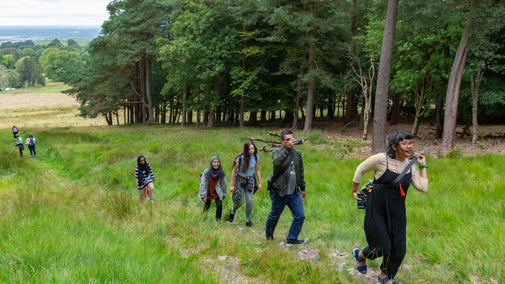Porthor walk
Wales
Explore the rugged coastline on the northern side of the Llŷn Peninsula. This is a great walk to absorb some of the history and heritage of the area.
Near to
PorthorStart point
Car park at Whistling Sands, grid ref: SH170293Trail information
More near here
Porth Meudwy coastal walk
A circular coastal walk on the Llŷn Peninsula from Aberdaron along the headland to the small fishing cove of Porth Meudwy.

Get in touch
Our partners

We’ve partnered with Cotswold Outdoor to help everyone make the most of their time outdoors in the places we care for.
You might also be interested in
Walking in Wales
Explore wide open landscapes, gentler coastal strolls or energetic hikes for something a little more challenging. We've rounded up some of the best places to walk in Wales.

Outdoor activities at Porthor
Our coastline isn’t just beautiful, it’s fun. Whether surfing, bodyboarding or kayaking, you’ll love getting active in the water at Porthor. Explore a great family beach and enjoy a great place to relax.

Coastal walks in Wales
Discover the best walks along the Welsh coast, taking in picturesque peninsulas, rugged headlands, quaint hamlets, prehistoric monuments and outstanding wildlife.

Coasts and beaches in Llŷn
Learn more about what to see and do on the Llŷn Peninsula in North Wales, from rock-pooling at Porthor to exploring culture and history at Porth y Swnt.

Cotswold Outdoor: our exclusive walking partner
Learn about the National Trust’s ongoing partnership with Cotswold Outdoor. Find out how they help us care for precious places and the exclusive discount available for National Trust supporters.

Staying safe at National Trust places
The special places in National Trust care sometimes come with a few risks for visitors, be it coastline or countryside. Find out how to keep safe throughout your visits.

Follow the Countryside Code
Help to look after National Trust places by observing a few simple guidelines during your visit and following the Countryside Code.

Walking
Explore some of the finest landscapes in our care on coastal paths, accessible trails, woodland walks and everything in between. Find the best places to walk near you.

